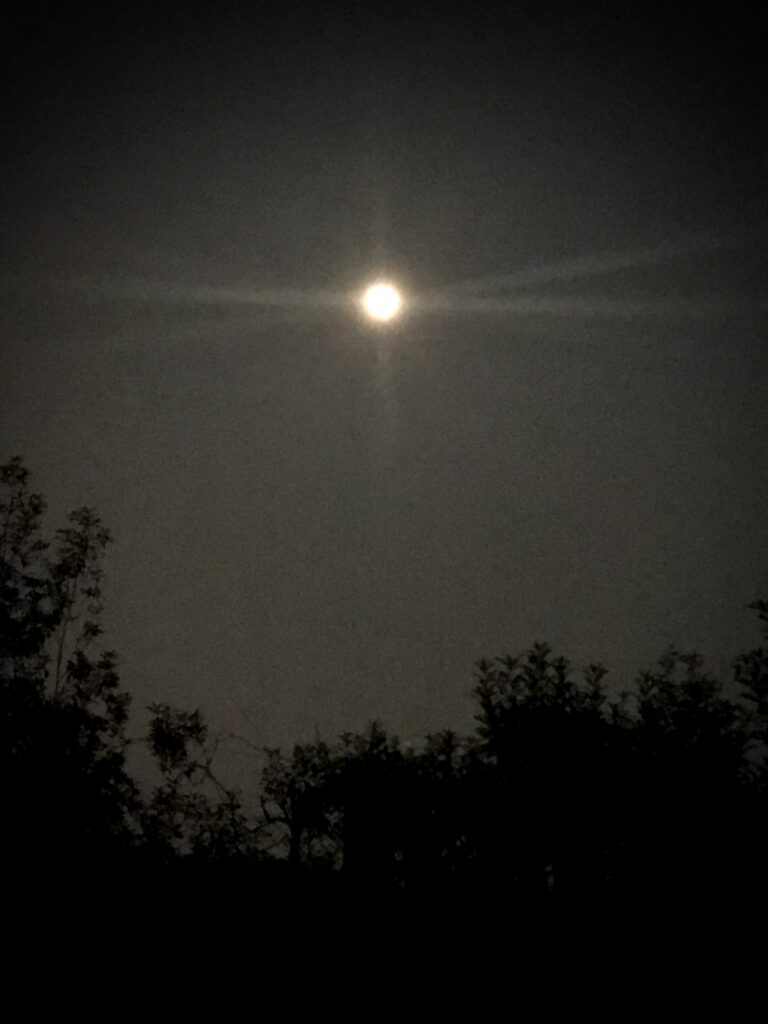The thing they don’t tell you about hospice is that it’s not the big moments that undo you—it’s the small ones. It’s the oxygen machine humming in the dark like a mechanical lullaby you didn’t ask for. It’s the four-hour med schedule that turns you into a human metronome, ticking along to the beat of morphine doses and time’s indifference. It’s the near-total absence of sleep, because somewhere along the line your ears trained themselves to pick up the faintest sigh, the softest moan, any clue that she might be in pain.
It’s the waiting. And waiting feels like too gentle a word for what it really is.
Those last days with my mom stretched and folded in on themselves like bad origami. The edges were sharp, the creases didn’t hold. Days and nights blurred, and I started to understand why newborn parents look like they’ve just barely survived something epic. Because they have. And so had I.
Every four hours I got up to give her medicine. It felt like a sacred task in the beginning. Somewhere around hour 36, it felt more like being on call for a job I never applied for but couldn’t bear to quit. She wasn’t really awake much by then, floating somewhere between here and wherever “next” is. I would listen for her breath, the strained inhale, the pause, the gurgling exhale, and measure the world by it.
And then, sometime around 3 a.m., I noticed the silence. Not total silence, mind you. The oxygen machine was still pumping away, dutiful as ever, a background character who didn’t realize the main act was coming to a close.
I don’t know why I was up at that hour. Maybe I’d never really gone to sleep in the first place. But I listened. I listened hard. And what I didn’t hear told me everything.
Her breathing was gone. Only the machine kept time. And that’s the kind of silence that fills up a room and takes your breath with it.
I checked her temperature. Ninety-seven degrees. The absurdity of that—taking someone’s temperature when there’s no breath left—didn’t hit me until later. But that’s what you do. You check. You look for proof of what you already know but can’t quite accept.
She was gone.
And the moment was so impossibly quiet that it felt wrong. Shouldn’t there be some celestial trumpet fanfare? A light beam cracking through the ceiling? Instead, it was just me, barefoot in pajama pants, listening to a machine that hadn’t yet gotten the memo.
I stood there for a while. Just stood looking at her. And then I did the next thing. I called the hospice nurse. I called my sisters. I texted Michelle. I moved through the steps like someone following directions to assemble a piece of IKEA furniture: insert tab A into slot B, but everything feels hollow and none of the parts fit the way they should.
I don’t know exactly what happens after we die. I like to imagine my mom found her way to some sunny place filled with bottomless coffee and good family stories that never get old. Maybe her mom, my yiayia, was waiting for her. Maybe there’s a beach.
What I do know is that, in those final days, the hard part wasn’t just the dying. It was the living in between. The relentless watching. The impossible act of holding vigil. And then the strangest and hardest part: the silence after.
That silence is still with me.
It shows up at odd times, like when I’m cycling, riding through nowhere, and suddenly I can’t hear anything but my own breath and the wind in my helmet straps. It reminds me that we’re all here for a little while, making noise, making messes, and doing things. And eventually, we go quiet too.
But not yet. Not today.
Today, there’s a ride to take. A story to tell. A little more noise to make.
